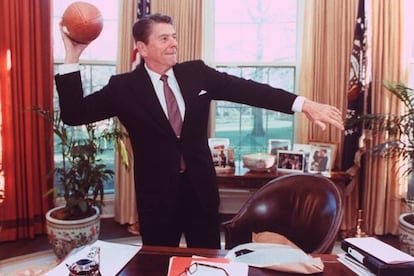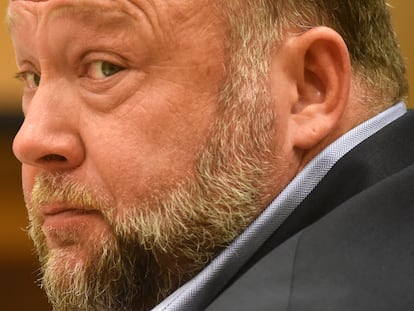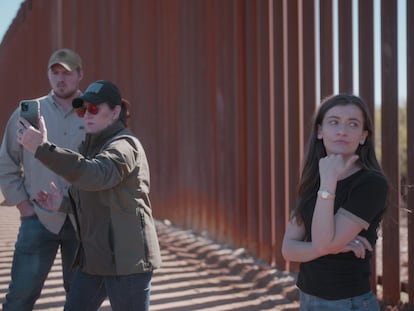It all started with Reagan, but Trump is a different story
‘The Reagan Show’ is a 2017 documentary featuring previously unpublished material about the president who spearheaded the conservative revolution. There are both parallels and differences between his era and the present

When did the wave of hard-right, nationalist, and populist movements sweeping the globe begin? It is often said that it started in 2016, with the Brexit referendum and Donald Trump’s first victory. However, the roots of this phenomenon can be traced further back to the conservative revolution led by Ronald Reagan and Margaret Thatcher in the 1980s. They combined ultra-liberal economic policies with a heavy-handed approach to social issues and a morally unrestrained foreign policy.
This was a precursor to what would later emerge with Trump, but it doesn’t stop there — look at Javier Milei in Argentina and his chainsaw against the state. The neoconservative movement, and its offshoot, neoliberalism, permeated what was once considered economic orthodoxy, at least until the devastating financial crisis that began in 2008. Now, the push for strongman leadership and a minimal state is resurfacing, with an added twist: deglobalization, in the form of fierce protectionism and tariff wars.
For a closer look at the lessons of the 1980s, there is The Reagan Show, a documentary produced by CNN and released in 2017, the first year of Trump’s presidency. While Reagan is never directly compared to Trump, the story offers a compelling look at their parallels and differences. Reagan, like Trump, was considered an outsider in the political landscape of his time — a familiar Hollywood face who upended the Republican establishment. However, his demeanor was far more refined than Trump’s, a feat that’s not to achieve. Reagan excelled as a communicator: not only did he love the camera, but he was always eager to be in front of it. And he had a knack for irony. When asked about his unconventional career, he famously quipped: “How can a president not be an actor?”
The documentary The Reagan Show brought to light previously unseen footage from his many public appearances, including outtakes where he would prank his collaborators. One example: he recorded a peace message addressed to the Russians, and once the cameras stopped rolling, he said: “Take that, Mr. Gorbachev.” The story itself is whimsical: the hawkish Reagan ended up being perceived as a dove, signing a nuclear disarmament treaty with the Soviet Union during the Perestroika that marked the end of the Cold War. The documentary emphasizes the thawing of relations that allowed Reagan to hold multiple summits with Soviet leader Mikhail Gorbachev and reach important agreements in a world that lived in fear of nuclear war. Films like The Day After and Threads depicted fictional atomic attacks in Kansas and Sheffield, respectively, while the public held its collective breath.
Reagan was already using the phrase, “We’ll make America great again.” He began his presidency with the Star Wars program, an anti-missile system in space designed to challenge the “evil empire,” as he referred to the USSR, and it foreshadowed a new arms race. We hear him say, “The force is with us,” as if he were a Jedi; Reagan was known for his fondness for cinematic metaphors. But by the end of the documentary, he is portrayed as a champion of peace, delivering anti-war speeches alongside Gorbachev — remarks that seemed out of character for him.
This portrayal glosses over the aggressive foreign policy Reagan pursued in other areas, such as in Chile and Argentina, where he supported brutal, genocidal dictators without hesitation, or in Nicaragua, where he orchestrated a civil war against the Sandinistas. Not to mention the invasion of Grenada. It does, however, touch upon the scandal of the Iran-Contra affair, which involved the ayatollahs, the Nicaraguan Contras, and Central American drug traffickers, which contradicted the otherwise coherent stance Washington took in global diplomacy.
We also hear Reagan defending his economic policies, known as Reaganomics, which emphasized deregulation, tax cuts (particularly for the wealthy), and reduced public spending. However, the documentary doesn’t address the long-term consequences of these policies. While they helped stimulate the economy after the oil crisis, they also led to the deterioration of public services, skyrocketing inequality, and a massive deficit that persists to this day. The idea championed by economist Arthur Laffer — that lowering taxes would ultimately increase revenue — was never realized.
Trump, like Reagan, is an effective communicator, though much more abrasive and unpolished. Instead of Hollywood, he honed his persona on the reality show The Apprentice. His economic policies are expected to follow a similar path — dismantling the state (with his “First Buddy,” Elon Musk, likely playing a key role) and reducing regulations, which could eventually lead to long-term consequences much like those of Reaganomics. In foreign policy, Trump is expected to adopt a less interventionist stance, which would mean largely stepping back and allowing leaders like Vladimir Putin and Benjamin Netanyahu to pursue their agendas without interference.
There are, of course, key differences. Reagan was not opposed to free trade (he helped launch the Uruguay Round, which eventually led to the creation of the World Trade Organization), and he was far more open to immigration, regularizing the status of three million undocumented people. Reagan never conspired against the constitutional order, as Trump did on January 6, 2021, and he was never convicted of the 34 crimes Trump is now facing.
The lessons of the 1980s offer little insight into how to prepare for this new era of extreme political polarization. Reagan made history for the conservative right, but Trump represents a different story altogether. Rather than drawing inspiration from Star Wars, this new political era — embodied by Trump and his sinister circle — seems to be heralding a dystopia.
Sign up for our weekly newsletter to get more English-language news coverage from EL PAÍS USA Edition
Tu suscripción se está usando en otro dispositivo
¿Quieres añadir otro usuario a tu suscripción?
Si continúas leyendo en este dispositivo, no se podrá leer en el otro.
FlechaTu suscripción se está usando en otro dispositivo y solo puedes acceder a EL PAÍS desde un dispositivo a la vez.
Si quieres compartir tu cuenta, cambia tu suscripción a la modalidad Premium, así podrás añadir otro usuario. Cada uno accederá con su propia cuenta de email, lo que os permitirá personalizar vuestra experiencia en EL PAÍS.
¿Tienes una suscripción de empresa? Accede aquí para contratar más cuentas.
En el caso de no saber quién está usando tu cuenta, te recomendamos cambiar tu contraseña aquí.
Si decides continuar compartiendo tu cuenta, este mensaje se mostrará en tu dispositivo y en el de la otra persona que está usando tu cuenta de forma indefinida, afectando a tu experiencia de lectura. Puedes consultar aquí los términos y condiciones de la suscripción digital.
More information
Archived In
Últimas noticias
James Cameron: ‘For the films I like to make to continue to exist, we have to find a way to make them cheaper’
Families demand repatriation of bodies of Colombians who died in Ukraine: ‘This war is a slaughterhouse for foreigners’
The guardians of the meteorites of the Argentine Chaco
Helen Levitt, the photographer who captured the theater of the everyday
Most viewed
- Christian Louboutin: ‘Young people don’t want to be like their parents. And if their parents wear sneakers, they’re going to look for something else’
- US sanctions against jailed cartel leader ‘El Marro’ highlight Mexico’s lack of control over its prisons
- Cartels in Mexico take a leap forward with narco-drones: ‘It is criminal groups that are leading the innovation race’
- Liset Menéndez de la Prida, neuroscientist: ‘It’s not normal to constantly seek pleasure; it’s important to be bored, to be calm’
- ‘El Limones’ and the growing union disguise of Mexican organized crime











































